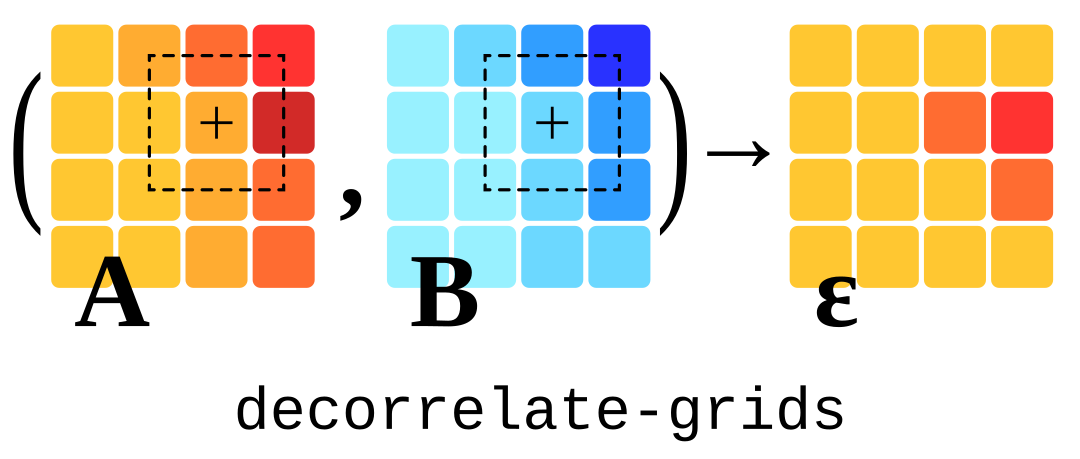Provided with two 2-D labelled arrays (
This was designed with a specific application in mind: mitigation of tropospheric delays in Interferometric Synthetic Aperture Radar (InSAR) data (see e.g. Bevis et al., 1992; Tymofyeyeva and Fialko, 2015; Adam, 2019; and chapter 4.6 in ESA EGMS Algorithm Theoretical Basis Document, 2021). There, the unwrapped phase (the response variable, in the context of regression) is observed to be correlated with topography (an explanatory variable), a phenomenon which can be attributed in part to non-modelled propagation delays. Among the mitigation strategies, the unwrapped phase can be de-correlated with respect to topography. Ideally, with all the due simplification of this context, this would reveal only the phase caused by deformation of the Earth surface. This was actually set up to test if this is effective and how does it compare to other strategies.
However, no part of this package is InSAR-specific. The procedure can be applied to any data with similar goals of de-correlation. Using the result of windowed regression by itself is also a possibility, as it is customarily done in some applications (e.g. topography-gravity regression in geophysics, see e.g. Pivetta and Braitenberg, 2020). Nevertheless, some assumptions and implementation choices reflect our original aim. Chiefly, data formats: the script reads and writes netCDF files, using xarray. The core procedure works regardless of this, hence moving on to a format-agnostic implementation is in the To Do list.
At the moment, only ordinary-least-squares linear regression is implemented as "correlation model". We deemed this enough for the application we were concerned with. Extension to other models or refactoring to allow any function to be used would be an interesting improvement.
Assuming variable
our goal is to estimate
We choose a simple linear model for
and we will assume that in each neighbourhood of an element in our arrays this is the model describing the unwanted "correlated component" of the observed signal
The least square system for each
where
Note that we are using a boxcar-shaped window, but the weights of any windowing function may be employed in a weighted least squares scheme.
No regression is carried out on elements on the edges (where one or more of the following is true:
We used
This left with a risk of confusion with the residuals matrix, which could not be
Arguably, the logo graphics would have been nicer as
At this stage, this boils down to:
- Clone this repository:
git clone https://github.com/apasto/decorrelate-grids.git && cd decorrelate-grids
- Install the package, e.g. with pip or by creating an ad hoc Conda environment:
- pip:
pip install -e ./ - conda:
conda env create -f environment.yml, then activate it
- To print out a short usage help of the provided
decorrelategridscli tool:
decorrelategrids -h
This is currently at a working, but early stage. Some steps are planned to get beyond the prototype state, see this task list: issue #2.
This work is licensed under the Apache License 2.0. See LICENSE.
